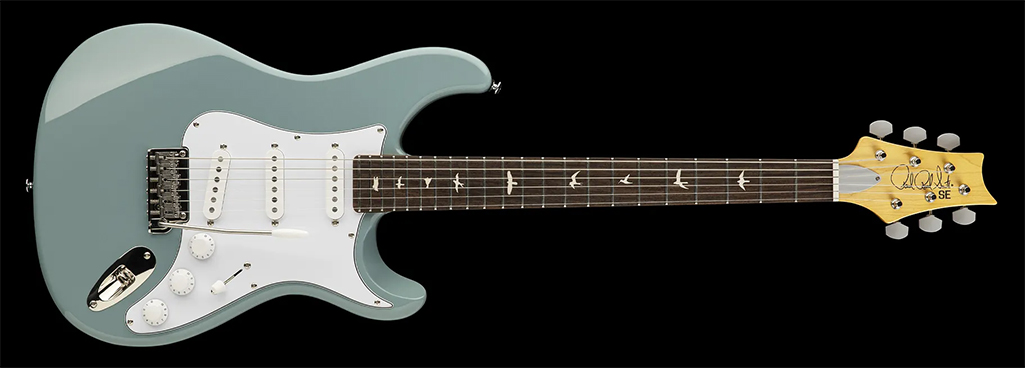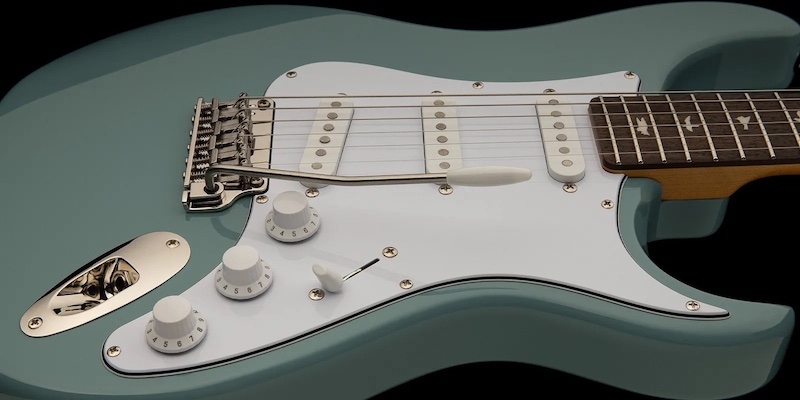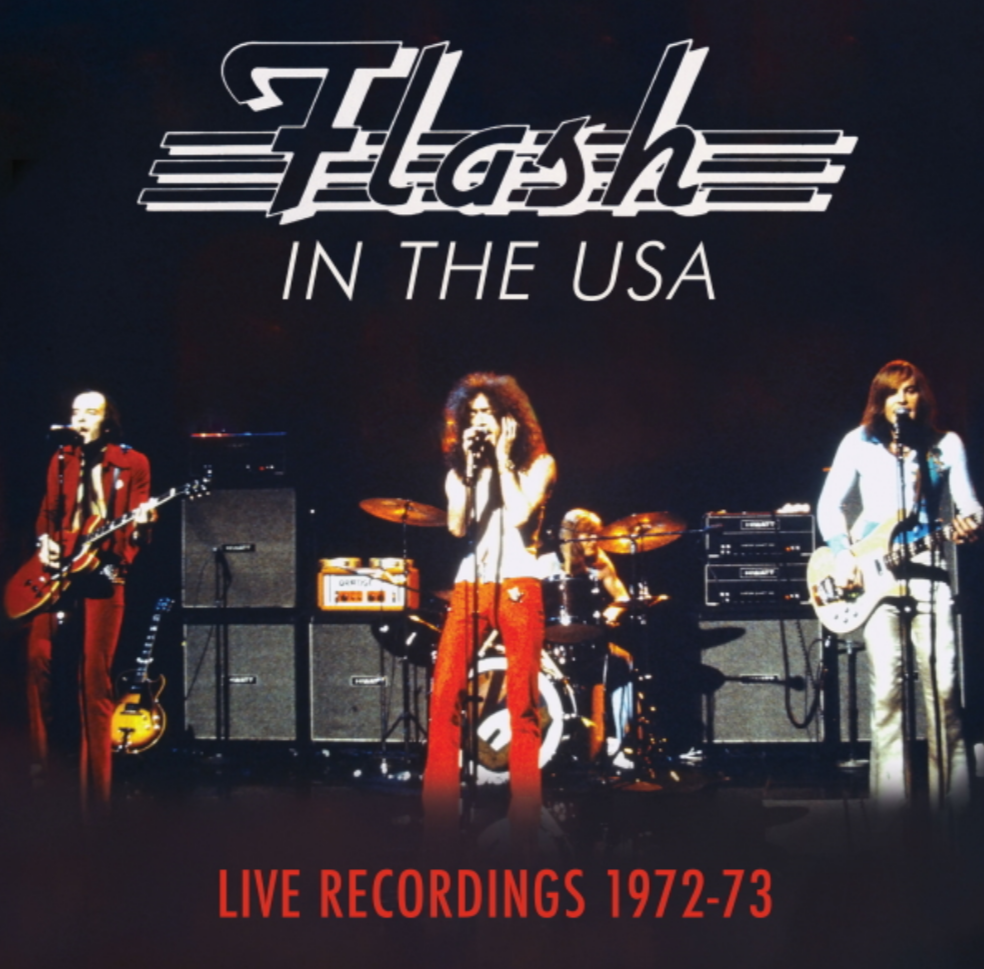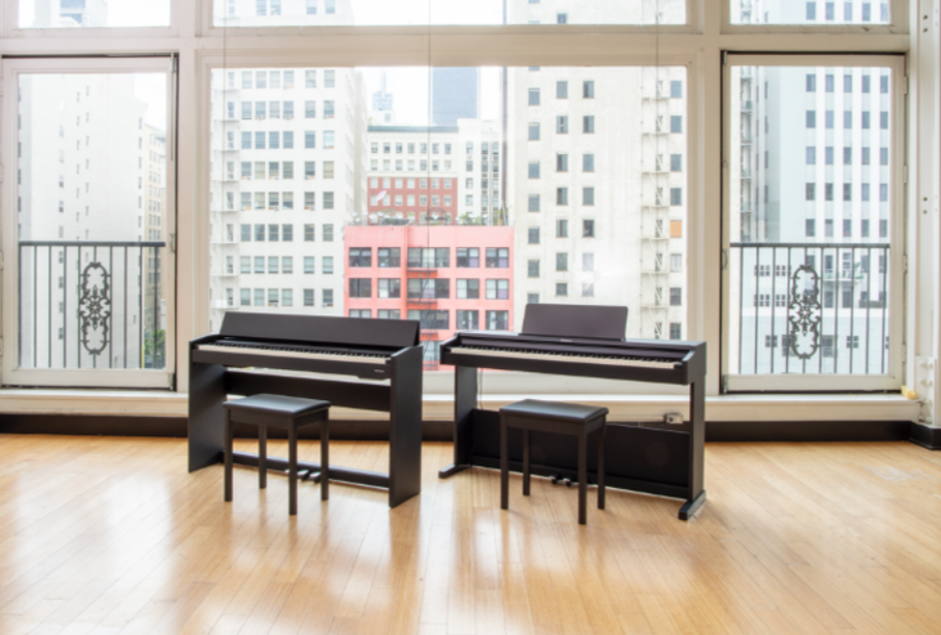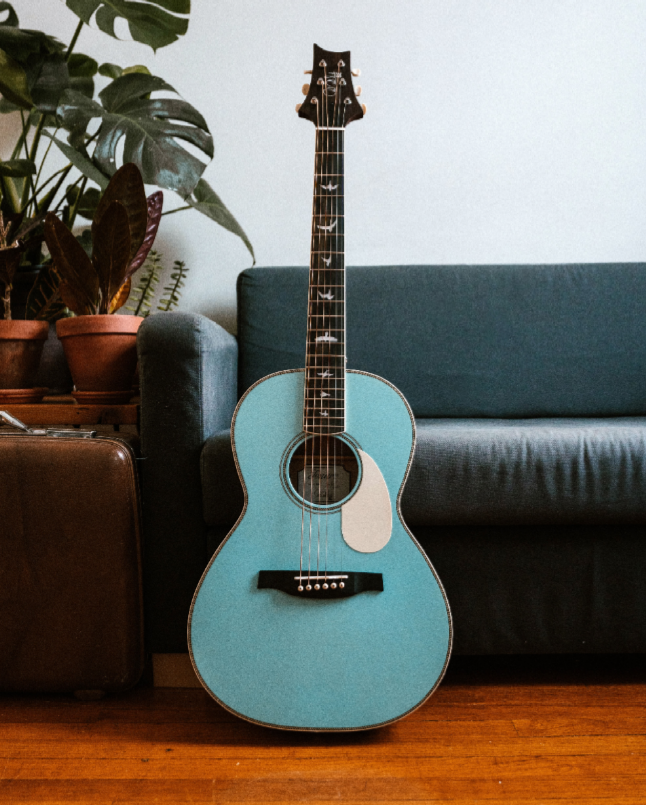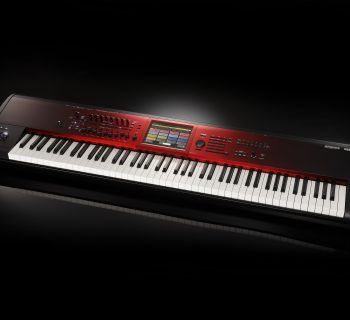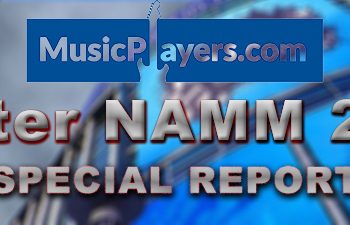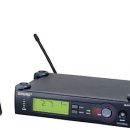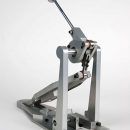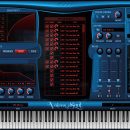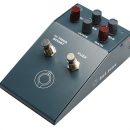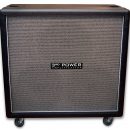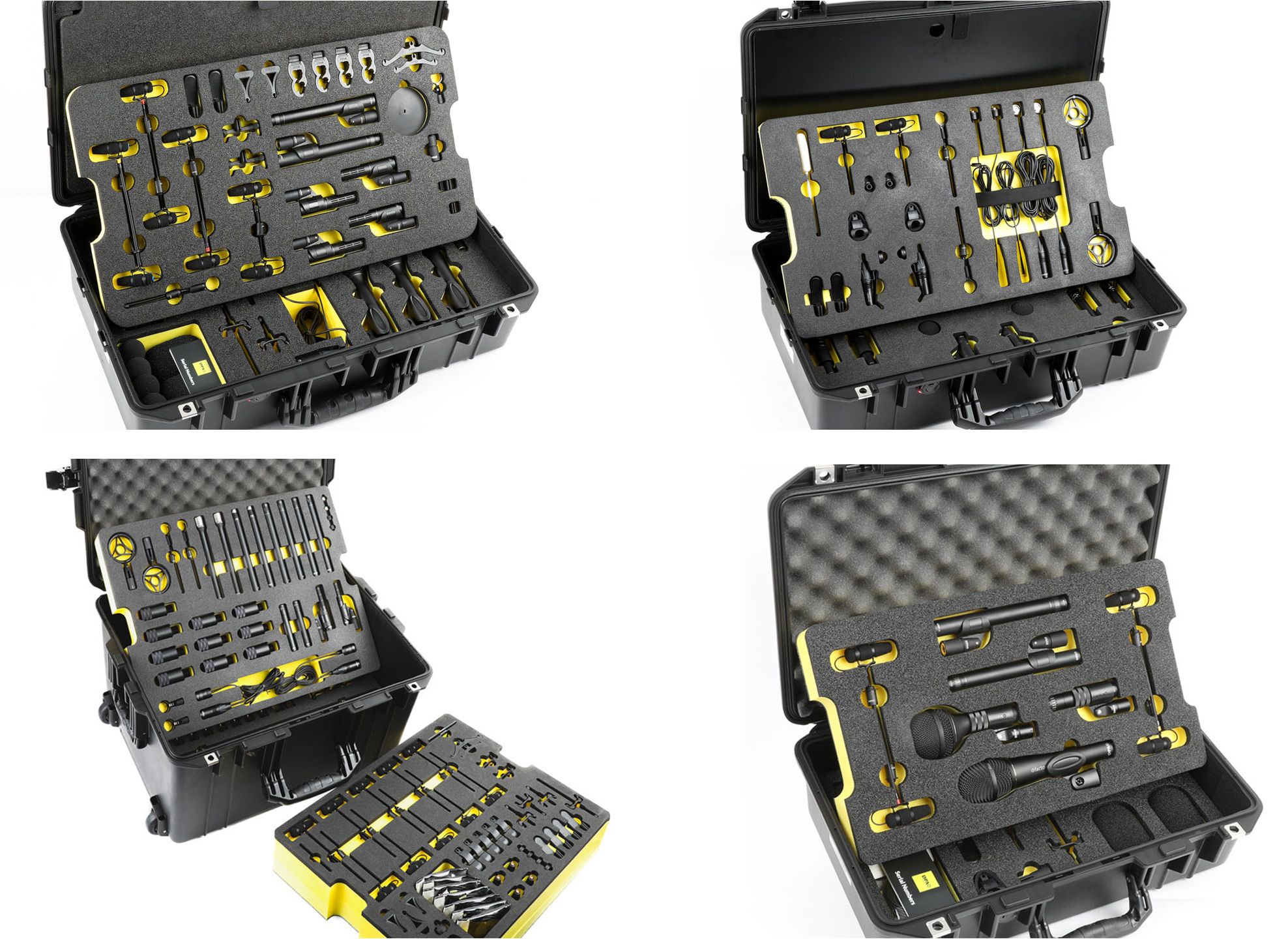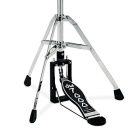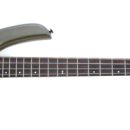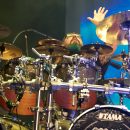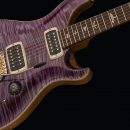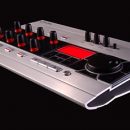Four years ago, we reviewed the PRS Silver Sky when it was first released and the internet was ablaze with controversy over it. Last year, the PRS Silver Sky reportedly outsold the Fender American Professional Stratocaster! Both are great guitars but it's clear that the Silver Sky has been accepted for the great instrument it is, even if some naysayers still exist (NOTE: It may look Strat-like, but it’s a different beast). That being said, the USA-made Silver Sky is still beyond the budget for many players, especially as guitar prices have increased the last year.
Since the initial release, everyone has been wondering when an SE version would come out. PRS could barely keep up production for the American Silver Sky as it was. So, the recent announcement of an SE version was probably one of the most exciting and anticipated announcements in the guitar world so far this year. And given how fast these are flying off the shelves, it will likely be one of the best-selling guitars of the year.
The new Silver Sky SE comes in four unique colors that are all different from the USA version. But we know the biggest questions out there plaguing our readers are: Does it sound like the USA version? And, how is it different?
If you lack patience for the in-depth evaluation that follows, we’ll cut right to the chase. Overall, despite a few physical differences, tonally they are almost exactly the same. And the quality of the workmanship on this guitar was top notch. So if you can’t spring for the USA model, you certainly won’t be disappointed by the more affordable Silver Sky SE.
Features
The double-cutaway John Mayer signature Silver Sky SE model comes with three of the PRS SE versions of the 635JM single-coil pickups, a bolt-on 25.5” maple neck with an 8.5” radius Indian laurel fretboard, and PRS reverse modified, elongated headstock. We will get into the differences between the USA-made Silver Sky and the Indonesian-made Silver Sky SE version in more detail below.
The PRS Silver Sky is a solid body, double-cutaway Stratocaster-style guitar with a poplar body and a gloss coating. According to PRS, the neck was designed after early ‘60s vintage instruments and has a “C-ish” shape. It has a synthetic bone nut with a 1.625” width and a satin, tinted coating on the 25.5” maple neck (which features a beautiful grain).
The fretboard is an Indian laurel rosewood with small bird inlays, a 8.5” radius and 22 frets with custom fret wire that PRS says is slightly smaller and thinner than found on most PRS guitars. The neck depth is 0.83” at the nut and 1.0” at the twelfth fret. The neck heel is contoured to allow improved access to upper frets. There is a PRS-patented, dual-action truss rod accessible at the headstock below a brushed metal plate.
The headstock is a reverse PRS design but slightly modified to match the contours of the guitar and elongated for better hand access at the first few frets, as John points out. The tilted headstock eliminates the need for a string tree. The tuners are a traditional vintage-style close back, but without PRS’s locking design. The tuner head is a matte light gray plastic.
The guitar is equipped with three PRS SE John Mayer 635JM “S” single-coil pickups in typical Strat configuration. Why are they named 635, you ask? Because they sound somewhere between two favorite Strats of his—a ‘63 and ‘64—hence 63.5 or 635 to not be awkward. The six pickup pole magnet heights on each pickup follow the fretboard radius. The pickup covers have a matte white finish but do not have PRS635JM engraved on them as you’d see on the USA version of the guitar. Also, the pickup covers do not have rounded edges.
Controls include standard Stratocaster controls with a Master Volume, Tone 1 (Neck Pickup), Tone 2 (Bridge/Middle Pickup). There is also a standard five-position switch:
Position 1. Bridge Pickup.
Position 2. Bridge and Middle Pickup (hum canceled).
Position 3. Middle Pickup.
Position 4. Middle and Neck Pickup (hum canceled).
Position 5. Neck Pickup.
The lower tone control knob controls the tone for the bridge pickup while the middle tone control knob controls the tone for the middle and neck pickup. The knobs for the volume and tone controls were specifically designed for this guitar but are not labeled volume or tone as they are in typical configuration and labeling them is unnecessary. Also, the knobs are labeled from 0-10, unlike typical Strat volume knobs that are labeled 1-10. The pickguard is three-ply, white-black-white.
The bridge is a modern style, two-point tremolo with two screws and individually adjustable, bent steel saddles and a steel block. There is a threadless, pop-in tremolo arm with an adjustable tension screw. To John’s preference, the bridge comes set up flush with the body for better sustain and resonance, but you could float it slightly if desired. The jack plate is slightly raised for a unique appearance and easier insertion of a cord.
The hardware is in a shiny chrome except for the saddles which are a brushed steel. The body paint is a uniform color. The neck plate is a matte black and comes with the name and model of the guitar as well as John Mayer’s signature engraved. The guitar currently comes in four colors: stone blue, dragon fruit, moon white, and evergreen. (We received the tantalizing evergreen to try out.) The guitar comes with 10-46 strings and a standard PRS SE gig bag.
Here's a cool conversation between Paul Reed Smith and Rene’ Martinez, guitar tech for John Mayer, regarding the features and development of the original Silver Sky guitar:
One of the biggest questions is, how is this Silver Sky different from the USA version?
- Head stock with more yellow/amber tint with the PRS SE logo, and the front and back of headstock are satin finish.
- Vintage style tuners, not locking, but still with gray tuning peg.
- Truss rod cover has a different shape more like the rest of the PRS SE guitar line.
- Nut is synthetic bone with a different shape and a more standard 1.625” width instead of 1.656” width.
- Indian laurel rosewood fretboard instead of Brazilian rosewood.
- 8.5” radius fretboard instead of 7.25”
- Back of neck is satin finished with yellow/amber tint.
- Black heel plate has SE logo.
- Body is poplar.
- Pickup covers do not have rounded edges, and no JM engraved on them.
- Bridge: two-point instead of vintage six-screw.
- Pots are a bit firmer, albeit smooth, to turn, with no wiggle to them like we have found on the USA version.
- Strap buttons are not a bass string tree but the more traditional PRS SE style.
- White plastic cover on the back over the springs, unlike the US version which has no cover on the back.
We didn't go under the hood of the pickguard to look at the pots or capacitors because there was no need to with the way this guitar sounded. And although there are at least fourteen differences which may seem like a lot, these are similar guitars that sound essentially the same. Also, some of the changes on this model likely streamline the manufacturing process for the SE line in order to keep the costs down.
Usability
Immediately, it was obvious that PRS wasn’t going to cut any corners when releasing an SE version of the Silver Sky. This was clearly a well-made instrument with everything you would expect from PRS and a formidable contender to the USA-made Silver Sky. The fretwork was flawless. The set-up including the intonation and string height was perfect. And weighing in at 6lbs 8oz (yes, you read that right), the guitar was very light and extremely resonant, not to mention well balanced on our shoulders.
As we stated in our original Silver Sky review, one thing that hasn’t really changed in 60+ years is the position of the arm rest contour on a typical Strat body. But the PRS Silver Sky contour is in a noticeably more comfortable position. If you look down from the top of the body towards the bridge on a Strat, the forearm contour ends right around the back of the bridge. On the Silver Sky, the forearm contour is a bit softer and extends further towards the headstock and ends at about the top of the bridge pickup. This means more comfort for players that like to either play their guitar tilted with the neck higher or have their axe hang lower than players likely did back in the ‘50s when the Strat was first released.
One of the most noticeable features of the guitar was how comfortable the neck was. This neck was specifically designed for this guitar and is thin at the first fret and nice and fuller as you get to the twelfth fret. What was interesting was that the thickness seemed to increase gradually from the nut to the twelfth fret rather than the somewhat sudden increase in thickness that is sometimes felt on guitars. It has more of a “D” shape at the lower frets and more of “C” shape at the upper frets. It was covered in a satin finish that was smooth as butter to play, with no stickiness. The contoured heel made reaching the upper frets quite a bit easier, and more so than we thought in our original Silver Sky review.
One of the more controversial features on the original Silver Sky was the 7.25” fretboard radius. As John said in his Instagram Live video, when he picks up a guitar, he doesn’t know what the radius is of a fretboard as long as it feels right, and to him, the 7.25” on this guitar felt right. We own a USA made Silver Sky and we can bend two full steps with no fretting out. The SE version is slightly flatter with a 8.5” radius and was very comfortable to play. And while playing slide on the USA made version with the 7.25” radius was a little tricky at times, it felt markedly more comfortable with just this slightly flatter radius. Keep in mind most Strats nowadays are 9.5” and almost all Gibson guitars are 12” radius.
One will also quickly notice the tilted headstock and no string tree. There are plenty of debates regarding straight vs tilted headstock in terms of cost of production, tuning stability, tone and sustain. Regardless, it was aesthetically pleasing and added to the unique appearance of the guitar.
The tuners were smooth and precise, and the guitar stayed in tune well one it settled in. The matte gray color of the tuner keys was different and a bit quirky looking as with the USA version, but added a contemporary style to the guitar (as did the white pickguard). The pots on the volume and tone controls had a nice resistance when turned and there was no rattle as we experienced during our original review of the USA version. The five-way switch was much stiffer than on most Strats, which some will like as it's much harder to accidently knock it to a different position while playing.
When the switch is in the bridge position, it is a bit closer to the high E string (about ¼ of an inch). Since we already own a Silver Sky, we were used to it. One thing we did notice that we have noticed with other PRS guitars is that when moving the five-way switch from position to position, it does make a louder sound than on traditional five-way switches. In quieter playing settings, this could be audible. Also, the volume knob is a smidge further away from the high E string which may be more comfortable for some players. The middle of the volume knob on the PRS Silver Sky is ~0.25” further away from the high E string than on a typical Strat.
The bridge is set up from the factory with the bridge plate flat against the body so the tremolo only can be used for lowering the note and playing a narrow vibrato. Of course, one can change the set-up to a floating bridge by loosening the springs and redoing the action and set-up. The tension screw for the tremolo arm is located on the top of the bridge which allows easy access without having to get under the bridge plate. Also, the jack plate is contoured and made cable insertion a bit more seamless, and it added a nice design aesthetic.
We were pleasantly surprised that the SE version did not have the bass string tree-based PRS strap buttons. Those buttons, although cool looking, take quite a bit of effort to get a strap on. The SE had more dome-shaped strap buttons, which were easy to get a strap on yet comparably secure. They sit about one quarter inch off the body unlike the ones on the USA version which are just ⅛” off the body. Big difference when trying to get a new strap on the guitar.
Some reviewers of the USA made Silver Sky as well as the SE version have reported string breakages at the saddle while bending the high E string. We have never encountered this with our Silver Sky nor while reviewing the SE version.
One other note after having this guitar for a few weeks in our dry Arizona climate: we started to notice some slight fret sprouting. Fret sprout used to be relatively uncommon except for drier climates but there are more and more reports over the Internet of this more regularly occurring even in less dry climates with guitars made in various countries. Some think it’s because they are using newer woods and not allowing them to dry long enough. Whatever the reason, it is something to be aware of and not representative of the fretwork from the factory. We have had our USA made Silver Sky for over a year and have not experienced this (and a quick trip to the luthier will fix this if you can’t do it yourself).
Sound
If we were to pick one word to describe the sound of this guitar and the pickups it would be “squishy,” especially when played through a Tweed-style amp. The sounds were all what one would typically use to describe a great Strat: glassy, chimey, and harmonically rich. We were jamming on the USA version right as FedEx dropped off the SE at our studio. Honestly, as soon as we unboxed it and tuned it up, we forgot we were playing the SE version.
Also check out what the Silver Sky SE sounds like with a few other guitarists jamming to John Mayer’s "Wild Blue" on the Silver Sky SE:
We own more than ten Fender Strats and they all sound different with differently voiced pickups. Although the Silver Sky SE sounds different than all of those, it sounded most similar to our American Professional 2 with a rosewood fretboard. The pickups are voiced very similarly and deliver classic single-coil tones. The SE essentially sounded the same as the USA-made Silver Sky. Overall though, we still preferred the bridge pickup tone with the Tone knob rolled down to about 7 to tame some of the high end. These are by no means noiseless pickups except when hum is canceled in positions two and four on the five-way switch.
We started testing on a 5W Tweed-style amp for classic, cleaner single-coil tones. The sound was pristine with clarity to each note. The glassy Strat tones were there but the tone was more full than with many single-coil pickups. The bridge pickup with the tone knob all the way to 10 was a little less harsh than typically heard with bridge single-coil pickup, but we feel it still sounded best with the tone knob rolled down to about 7. Drive the amp and roll down the tone knob to around 5-6 on the bridge pickup and one can achieve more humbucker-like tones. On other style amps, the pickups responded well and were less jangly and “squishy” but clear and harmonically rich. We were pleased that this guitar isn’t a one trick pony. We were able to mellow out the tones when we needed to without it sounding muddy.
One question we saw on social media was how the guitar performed in higher gain settings. Maybe you’ve been thinking of getting a single-coil guitar but were concerned how it would handle heavier rock. In that case, these pickups will provide the versatility you need. By rolling down the tone knob for the bridge pickup, we were able to achieve almost humbucker like tones, albeit with some single coil hum. You are probably not going to be playing death metal on this guitar anyway, but it will get you closer than a typical single-coil Strat.
If you were thinking about getting the USA made Silver Sky but it’s too expensive for you, or you needed a less costly backup guitar for your gigs, we would jump at getting the SE version. Some may prefer some of the SE features such as the satin neck, 8.5 “ fretboard radius, and two-point tremolo. We had to sand the neck a bit on our USA Silver Sky as the nitro finish was a bit tacky for our preferences, as we prefer a satin neck finish.
Documentation and Product Support
Included in the case were the vibrato arm, Allen wrench for the bridge saddles, and a truss rod adjustment tool.
The support section of the PRS website has most of the info you would need to adjust and maintain your guitar.
Price
The street price of the PRS Silver Sky SE is $849. We feel this is a very good price for a well-made, Indonesian version of the Silver Sky that seems to have high quality components, good quality control, and a fretboard with polished and leveled frets with no fret sprout.
PRS could have easily charged more, especially in the current market where prices are rising. The original Silver Sky has experienced more than a 10% price increase in the last two years making this guitar ⅓ of the price of the USA-made Silver Sky without sacrificing anything of note.
Contact Information
Paul Reed Smith Guitars
www.prsguitars.com

